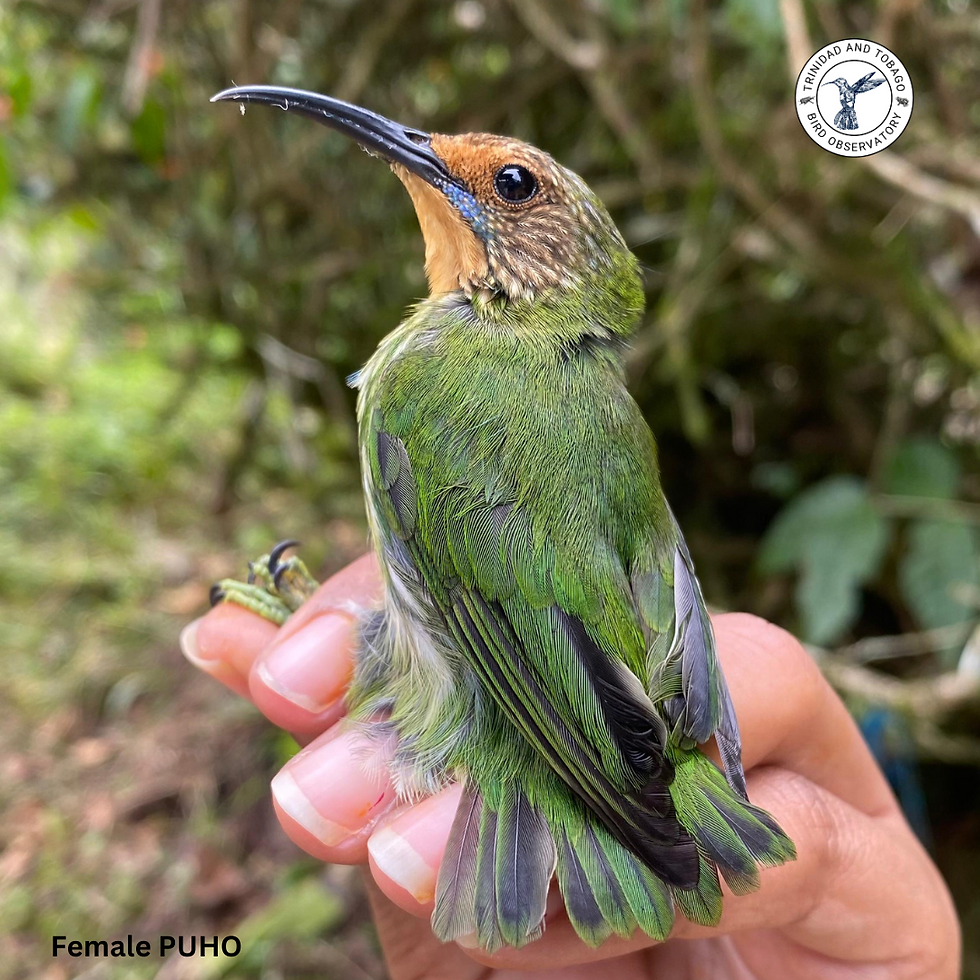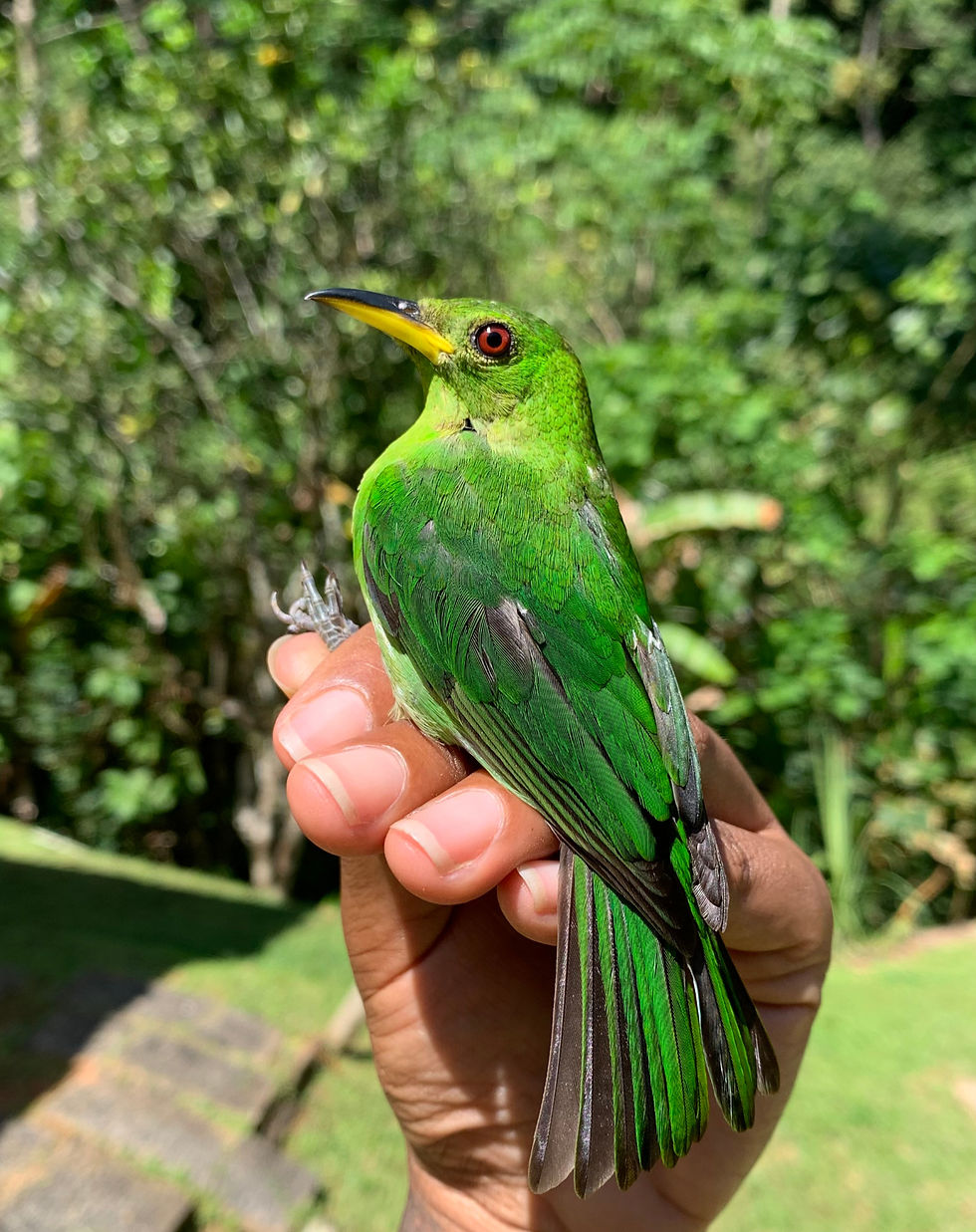From the Field to Your Screen – Conservation Field Notes on the Purple Honeycreeper
- TTBO Research Center
- Nov 11, 2024
- 2 min read
As part of TTBO’s ongoing banding efforts, we’ve been closely observing the Purple Honeycreeper, a species known for its striking purple plumage and unique molt patterns. In our recent field work, we’ve made fascinating observations that add to the scientific discussion around this species! In a previous newsletter, we shared a hypothesis based on Johnson and Wolfe’s 2020 study, suggesting that Purple Honeycreepers might undergo a limited to partial pre-alternate molt, suggesting they fall under the Complex Alternate Strategy (to be confirmed). This would mean that in their first year, these birds could experience two inserted molts before reaching their second basic molt. But why? In this field note, we’re excited to share our findings, adding new details to what’s known about this species’ life cycle.


A Hypothesis on Honeycreeper Molt
In a previous newsletter, we discussed Johnson and Wolfe’s 2020 hypothesis, which proposed that Purple Honeycreepers may undergo a limited to partial pre-alternate molt. According to this theory, juvenile honeycreepers will experience two inserted molts in their first year before reaching the second basic molt. This hypothesis would put the Purple Honeycreeper in the complex alternate molt strategy.
What Our Data Shows
Thanks to our banding data, we’ve observed that young male honeycreepers display a molt limit within their flight feathers, a result of having some black adult like feathers, retaining green juvenile feathers. This is likely due to an incomplete pre-formative (PF) molt, during which they also retain green, female-like body feathers with traces of purple but lack a full black face mask as seen in the adult male. This evidence supports the initial hypothesis, adding valuable data to our understanding of their development.
Intriguing Variations in Adult Plumage
Even among adult males, we’re noting interesting variations: while adult male birds typically have black masks and flight feathers, some individuals exhibit mottled green or purple-green plumage on their bodies in their full black mask. These variations in molt patterns highlight the complexity of the Purple Honeycreeper’s molt cycles, and we can’t wait to gather more data to explore these findings in greater depth.
Looking Forward With Purple Honeycreepers being common in our area, we are optimistic that continued monitoring will help us further confirm or refine our understanding of these molt patterns. This work highlights the importance of long-term, detailed data collection in conservation science, and we’re excited to share future discoveries as we unravel the mysteries of our island’s unique birdlife.
Stay tuned for more updates, and thank you for following along on this journey with TTBO!
Latest Field Update:
This week, we banded two definitive cycle female Purple Honeycreepers at the Boneo Brasso Seco station. This is exciting because it tells that adult males are nearby, and we’re optimistic about soon capturing juveniles to add to our molt mapping efforts. Each bird banded brings us one step closer to understanding these fascinating molt patterns.
Have Photos to Share?
If you’ve captured any images of Purple Honeycreepers and would like to contribute to our research, we’d be thrilled to see them. Please send your photos to our email at ttboresearch@gmail.com and you could have your photograph featured. By sharing your observations, you’ll be helping us piece together the bigger picture of Trinidad and Tobago’s avifauna!
Team TTBO




















Comments